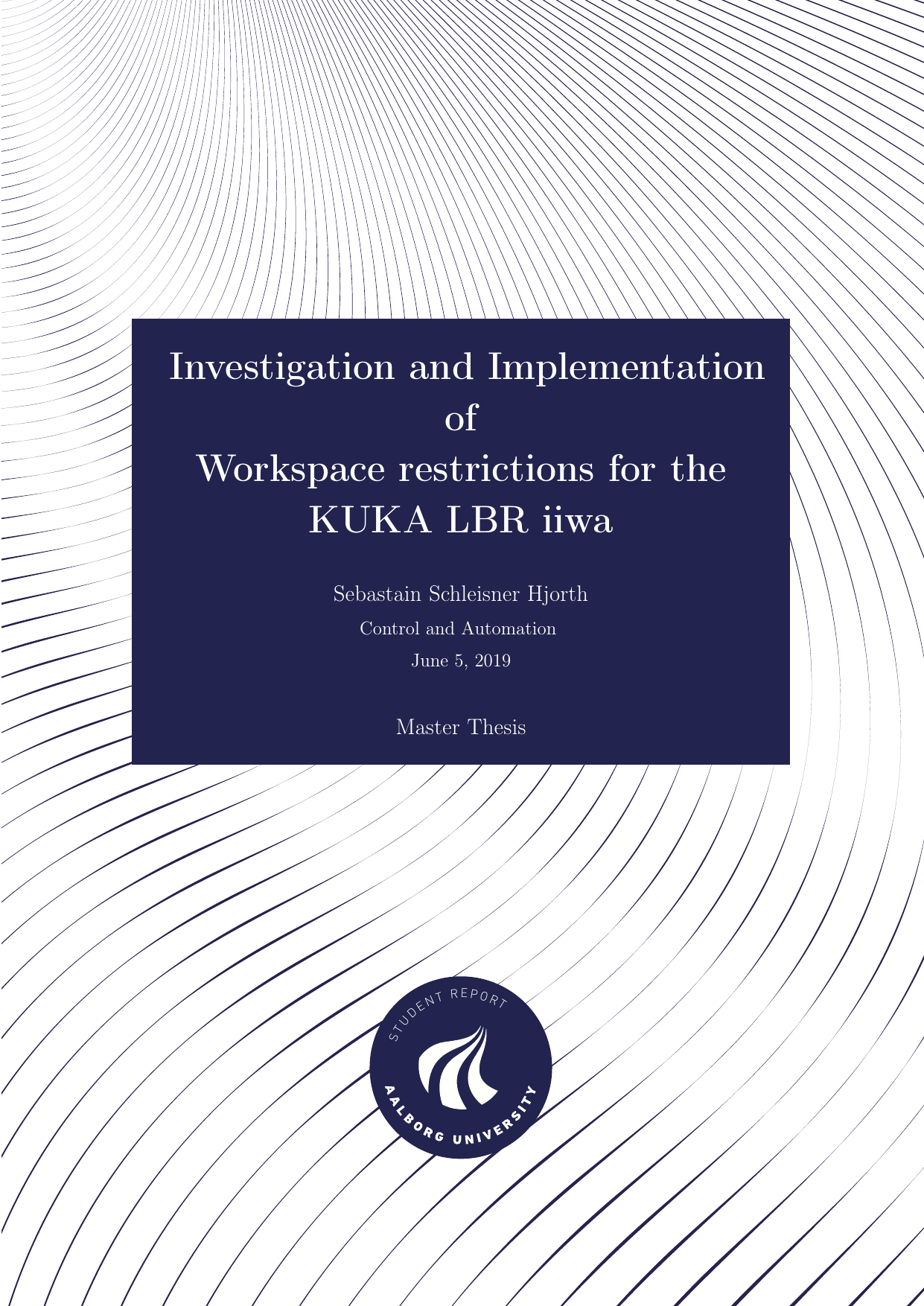
Investigation and Implementation of Workspace restrictions for the KUKA LBR iiwa
Author
Term
4. term
Education
Publication year
2019
Submitted on
2019-06-05
Pages
83
Abstract
Dette projekt handler om modellering, kontrol og arbejdsområde begrænsning af en kollaborativ og redundanten industri robot. Robotten, som bliver brugt i dette projekt er den så kaldte KUKA LBR iiwa, som bliver styret via en energibesparende impedans kontroller. Kinematiken og dynamiken af KUKA LBR iiwaen er modelleret baseret på skrue-teori. Desuden beskriver projektet en metode, som begrænser det kartesiske arbejdsområde ved hjælp af virtuelle vægge og skuenøgler. Udover disse kartesiske grænser beskriver projektet implementeringen af undgåelse af KUKA LBR iiwaens led grænser med en funktion kaldet Joint Limit Avoidance. Den overordnede kontrolstrategi blev for simuleringsformål implementeret i MATLAB og i den virkelige verden ved hjælp af KUKAs eget Fast-Research-Interface. Den energibesparende impedans kontrol blev verificeret og fungere som ønsket. Endvidere blev det konkluderet, at det er muligt at begrænse det kaskesiske- og led-arbejdsområde i KUKA LBR iiwa ved hjælp af Potential Fields, mens det er i en kompatible tilstand.
This project concerns itself with the mod- eling, control and workspace restriction of a collaborative and redundant indus- trial manipulator. The manipulator used in this work is the KUKA LBR iiwa, for which the designed solution is verified in simulation as well as on the real manipu- lator The kinematics and dynamics of the KUKA LBR iiwa are modeled based on the screw theory approach. The KUKA LBR iiwa is controlled via an energy- aware impedance control. Furthermore, the project describes a method to which restricts the Cartesian workspace with the help of virtual walls and wrenches. In ad- dition to these Cartesian boundaries, the project describes the implementation of the avoidance of joint boundaries with a feature called joint limit avoidance. The overall control strategy was for simulation purposes implemented in MATLAB and in the real world with the help of KUKAs own Fast-Research-Interface. The energy- aware impedance control was verified to work as intended. Furthermore, it was concluded that it is possible to restrict the Cartesian and Joint workspace of the KUKA LBR iiwa, with the help of poten- tial fields, while it being in a compliant state.
Keywords
Documents
